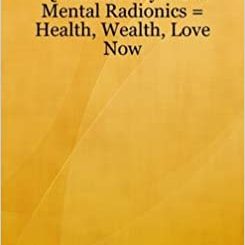
There has long been a tension between science and religion. Science is excellent at creating a hypothesis and through the “scientific method” uses measurement and analysis to prove or disprove the hypothesis. The most fundamental tool that science uses is mathematics. Mathematics can describe anything that exists from the cosmos to subatomic particles. By extending mathematical formulas beyond what is known, the unknown can be predicted. Then, scientists find ways to test the mathematical hypothesis thereby advancing science and human knowledge. This process has lead to some amazing conclusions in the last 100 years.
Isaac Newton discovered the basic formula’s that describe what our senses show us in 1687. He laid the foundations for most classical physics by describing universal gravitation and the three laws of motion. By 1901 scientists and mathematicians started to unlock a deeper reality.
A German physicist, Max Planck, discovered quantum physics and became the founder of quantum theory. Around the same time, Einstein developed the theory of general relativity. He later published papers on the general theory of relativity, quantum theory, and the thermal properties of light that laid the foundation of the photon theory of light. From this beginning, scientists and mathematicians have made immense strides in defining the basic nature of the universe and perhaps beyond.
There is no way that I can present the history, detail the findings, or quote the sources of math and physics discoveries over the past 100 years in this article. What I will describe are some of the conclusions that have come from these discoveries. These discoveries make mathematical sense, not intuitive sense, yet they have been proven to agree with actual measurements. These conclusions have been tested and verified millions of different ways to the point that they prove that relativity theory and quantum mechanics are more than mathematical theories, they are more accurate than the laws that Newton discovered.
1. Speed is a measure of space that something travels over time in relation to something else.
2. Space and time adjust to result in the same speed of light (670,616,629 mph). As something accelerates through space, time for it slows down to the point that time for it stands still at the speed of light. Light is eternal.
3. Space is not empty, it has properties. It contains the three dimensions that we see, a fourth dimension, time, and perhaps six or seven more that we cannot see. At the subatomic scale, it is flooded with activity and can force objects to move.
4. Time is not constant. It is dependent on motion and gravity.
5. Gravity is the shape of space-time. The heavier the mass the more the fabric of space-time is warped like a ball on a sheet of rubber.
6. Light has characteristics of a particle (photon) and a wave. It is an electromagnetic wave that never stops and only appears as a particle in a given location when it is measured. Otherwise there is only a probability that it is in a given location.
7. Understanding the nature of light has lead to the discovery of quantum mechanics, that has led to the understanding that all matter and energy have similar properties.
8. Mass can be converted to energy and visa versa; Energy = Mass x Speed of Light x the speed of light again. At the smallest level energy and mass are one.
9. From a mathematical prospective the past and future already exist.
10. All bodies in the universe are moving away from earth and their speed is accelerating as it would resulting from an explosion.
11. By reversing the observed mass and motion, scientists conclude that the universe we know resulted from the “Big Bang” 13.7 billion years ago. Our universe had a beginning.
12. The Big Bang is what moves time that we observe forward. All we ever experience is now. The flow of time may be an illusion.
13. Black holes are at the center of galaxies and stars that have collapsed. Their centers are of infinite densities and they get bigger the more mass that enters them. The outer edge of a black hole is called the “event horizon”. Beyond that, the gravitational pull is so great that light cannot escape.
14. Information about all that has gone into a black hole is stored on the boundary layer rim of the black hole as a two dimensional image. This could make a hologram of all that has gone into the black hole.
15. Energy comes in distinct chunks that cannot be subdivided called quanta.
16. Electrons are probability waves. You can never predict where they are.
17. All matter in the universe is made of atomic and subatomic particles and are ruled by probability not certainty.
18. The fundamental nature of reality at the deepest level is determined by chance. All is uncertain at the smallest particle level until something is measured. The moment you observe a particle the uncertainty disappears.
Where does this lead us? The greatest finding is that there are layers of reality below what we see and feel with our five senses. The reason we don’t recognize the things I just described in our daily lives is because they are either operating at such a large scale or a small scale that they are not apparent. However, they are real.
Scientists are working to discover the answers to what everything is made of and how it works. Some scientists feel that God is an invention of man’s mind to explain things that are unknown. Therefore, if science could discover what is unknown, then God and faith were not needed to explain reality.
What scientists have in fact discovered is that what is real in this universe and beyond is only a probability not an answer as described in finding 18 above. There are firm laws and mathematical formulas that describe everything, but what they describe is not definitive. At the smallest level, there is only a probability that matter exists at any point in space-time, yet what we experience is real to us,
I can’t help thinking about a quote from the Apostle John.
1 John 1:5 (NASB)
5 This is the message we have heard from Him and announce to you, that God is Light, and in Him there is no darkness at all.
This quote and the beginning of Genesis both state that light is part of God’s nature. Understanding light has resulted in our discovery of quantum mechanics and the building blocks of the universe. I believe that what math and science has discovered are the basic building blocks that God has used in creation. This shows us, in part, how God’s mind works. The super strings of quantum mechanics and relativity theory are the DNA of physical creation, where biological DNA is the basic building block of life. God is consistent in using fundamental codes to create the universe and life within it. Could all that we know just be a product of chance?
I contend that, it is God who turns probability into reality. What man sees as probability, is God’s flexibility. God used basic codes and laws to create everything, but didn’t constrain His ability to act in His creation by building reality on uncertainty. This is why miracles can happen. Without knowing it, scientists may be discovering that God is all that is real and our best science and math point to that truth. Science is discovering the mind of God.
Charles H. Huettner, Author
The Word & The Spirit: How God Speaks to You
Proudly WWW.PONIREVO.COM



